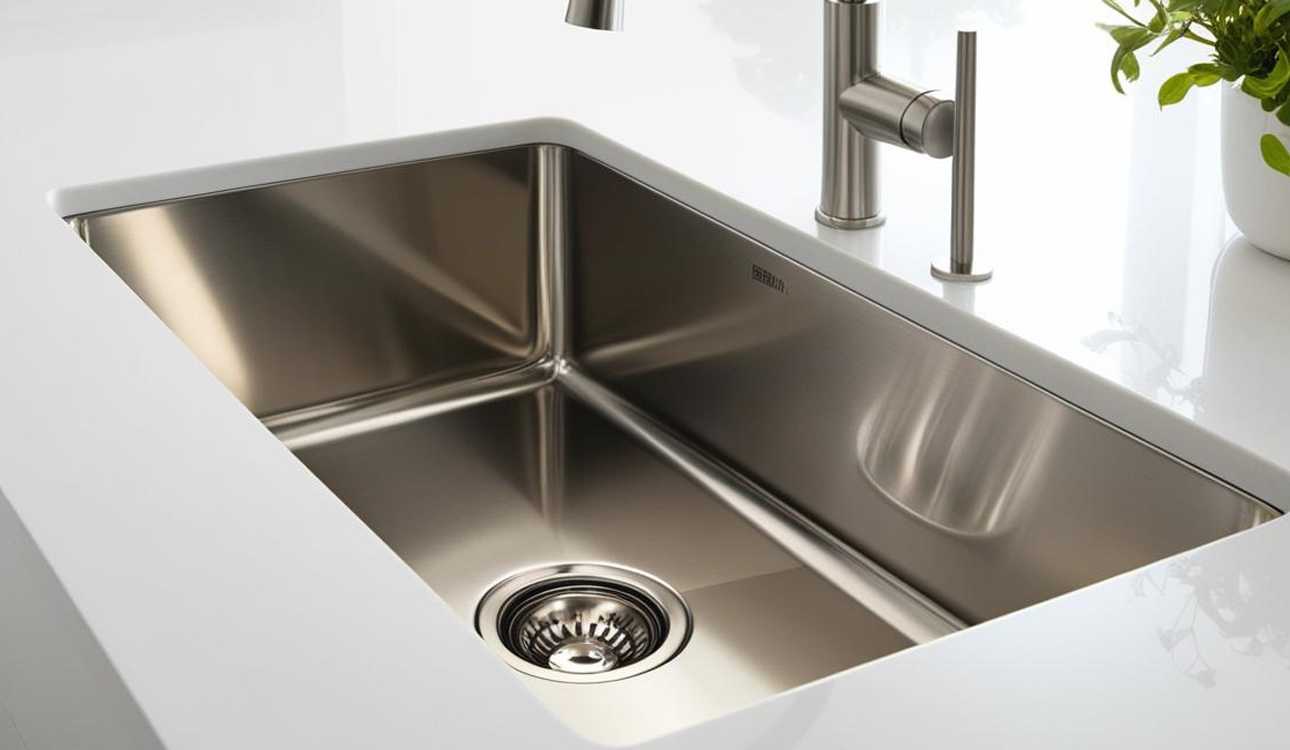If your kitchen sink is running slowly or is completely blocked, the problem is most likely a blockage deep in the pipes. Before you panic and call a plumber, there is a simple tool you can use to clear the blockage yourself: the drain snake. Snaking your kitchen sink drain is an easy DIY solution that will save you both time and money. Here’s a step-by-step guide to snake your kitchen sink drain and get your sink up and running.
What is a drain snake?
A drain snake (also known as a plumber’s snake or auger) is a long, flexible tool designed to unclog clogs that are too deep for a plunger to reach. It works by inserting the tool into the drain and turning it, breaking up or pulling out the debris causing the blockage. Drain snakes come in both manual and electric versions. A manual snake is sufficient for most household blockages.
When to Use a Drain Snake?
If you are facing any of the following problems, it may be time to snake your kitchen sink drain:
Slow Drainage: The water takes too long to drain from the sink, even though it eventually makes its way down.
Stagnant Water Your sink is completely clogged and never drains.
Unpleasant Odors: A persistent odor coming from the drain can be a symptom of a blockage that traps food debris or grease.
Tools You Will Need:
Drainage Snake (manual or electric)
Gloves (to protect your hands from dirt and germs)
Bucket or towels (to catch water or debris)
Pipe wrench or adjustable pliers (optional)
A Step-by-Step Guide to Snake Your Kitchen Sink Drain
1. Prepare the Space
Before you start, clean everything under your sink and place a bucket or towel to catch any spilled water. As this is a messy job, it is important to conserve space. Wear gloves to keep your hands clean.
2. Remove the P-Trap
The P-trap is the U-shaped tube under your sink, designed to prevent bad odors from coming up the drain. To access the drain pipe, you need to remove the P-trap.
Use a pipe wrench or adjustable pliers to loosen the sliding nuts on both sides of the Trap.
Place your bucket or towels underneath to catch any water left in the pipes when you remove the Trap.
After loosening the sliding nuts, gently pull the trap out and set it aside.
3. Place the Drain Snake
With the P-trap removed, you now have direct access to the drain pipe.
Insert the end of the trap snake into the exposed pipe.
Start turning the handle of the manual snake clockwise and push the snake deeper into the drain.
If you feel resistance, this is a blockage. Keep rotating to break the snake apart or attach it to the debris.
4. Remove the Blockage
The aim is to remove the obstruction or pull it out. Keep turning the snake as you push it deeper. If the blockage consists of grease or food particles, you should feel the snake cutting or breaking up the material.
If you hit a solid object, the snake may get stuck in it. In this case, remove the blockage by gently pulling the snake back.
For oily or organic blockages, twist the snake several times to loosen the blockage and then gently pull the snake back.
5. Remove and Inspect the snake
After clearing the blockage, gently pull the snake out of the drain. When removing the snake, any remaining debris may come out with it. This is normal and can be disposed of.
Check the snake for any debris or objects that may have caused the blockage.
If the blockage persists, you may need to snake the drain again or try a different method.
6. Reassemble P-Trap
After the drain has been cleaned, reinstall the P-trap:
Align the Trap with the drain pipe and reinstall the sliding nuts.
Tighten the nuts by hand and then use a pipe wrench or adjustable pliers to turn them one last time. Be careful not to overtighten.
7. Test the Drain
Finally, run some water to test whether the blockage has been successfully cleared. If the water flows freely, you are done! If it still backfires, you may need to rethink the evacuation or explore other options.
Tips for Success
Stubborn Blockages: If you encounter a particularly stubborn blockage, don’t be afraid to push the snake a little further or twist it for a few minutes. Sometimes it takes a while to break through tough blockages.
Leaks After Reassembly: If you notice a leak around the P-trap after reassembly, check the connections to make sure they are properly tightened. You may need to adjust the sliding nuts or replace the washers.
Avoid Overusing Chemical Cleaners: While chemical drain cleaners may seem like a quick fix, they can damage your pipes over time and often don’t work well on solid blockages. Snake handling is a more direct and effective solution.
When to Call a Professional
Snaking your kitchen sink drain is a simple task that can save you money on your plumbing bill. However, if you have tried snaking several times and the water still does not flow, the blockage may be too deep or too hard for a manual snake to handle. In such cases, it is best to call in an expert.



